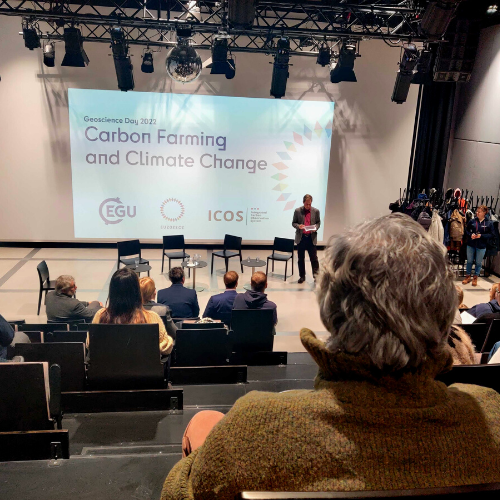
Carbon Farming refers to agricultural practices that increase the amount of carbon in the soil. It is one of the key ways the food supply system can contribute to tackling the climate crisis, and help the EU and its member countries reach their carbon neutrality goals.
What are the possibilities of Carbon Farming? What kind of methods are possible or already in use, and what does science say about their effectiveness? These were some of the questions set for the Carbon Farming and Climate Change event, which ICOS organized in partnership with the European Geosciences Union (EGU) and and the Czech Presidency of the Council of the European Union as part of the Geoscience Days initiative.
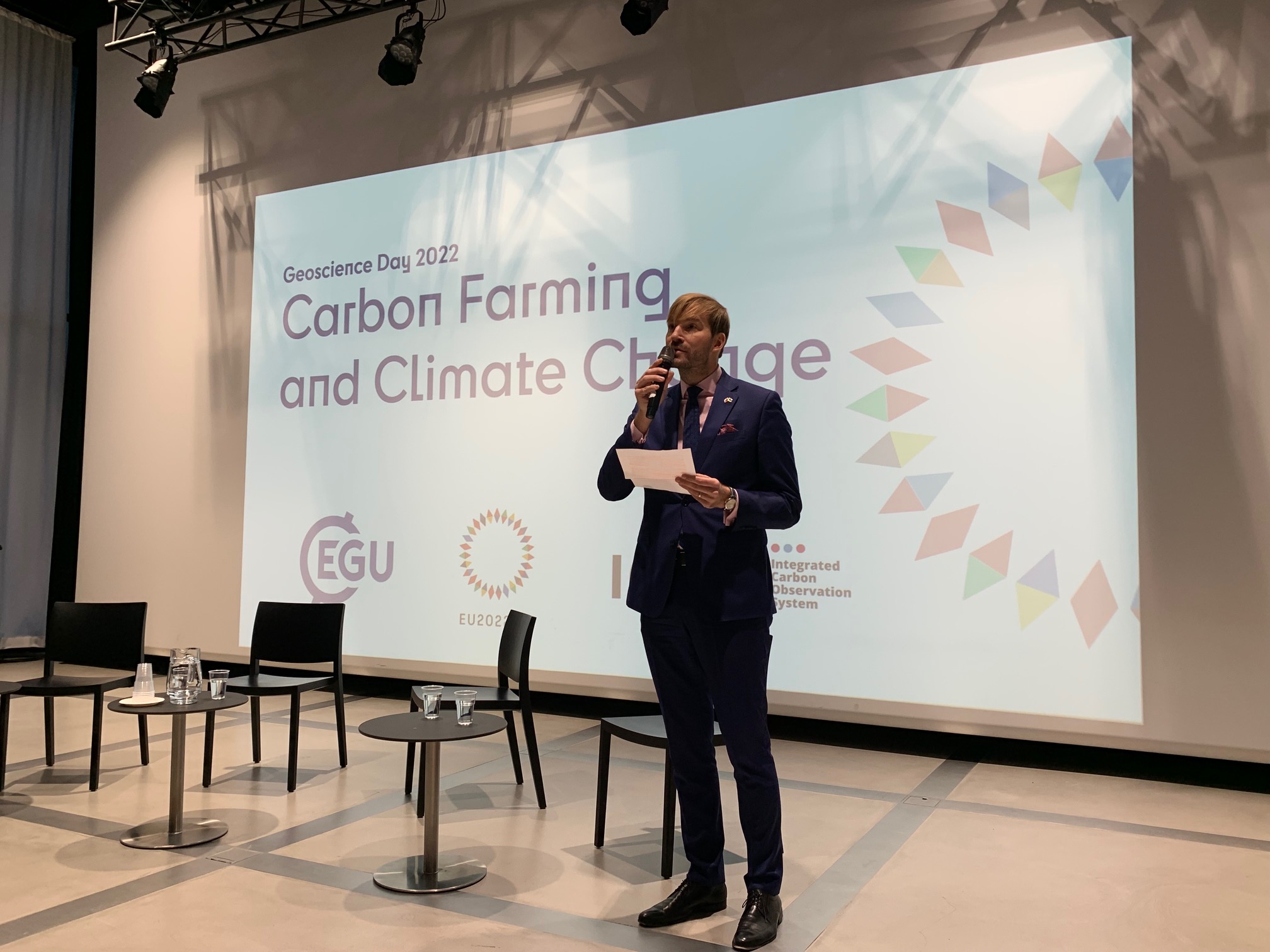
The event took place in Helsinki, Finland, in late November 2022. The speakers included experts from the Czech Ministry of Agriculture, Finnish Ministry of Agriculture and Forestry, the Swedish Environmental Protection Agency, the Carbon Action platform, Natural Resources Institute Finland Finnish Environment Institute, and Finnish Meteorological Institute.
Carbon farming has clear benefits for the Earth and the farmers
After the opening words by HE Mr. Adam Vojtěch, Czech Ambassador to Finland, from the current EU presidency country Czechia, and Werner Kutsch, General Director of ICOS, the programme started off with a panel: “The possibilities of carbon farming from a policymaker perspective.”
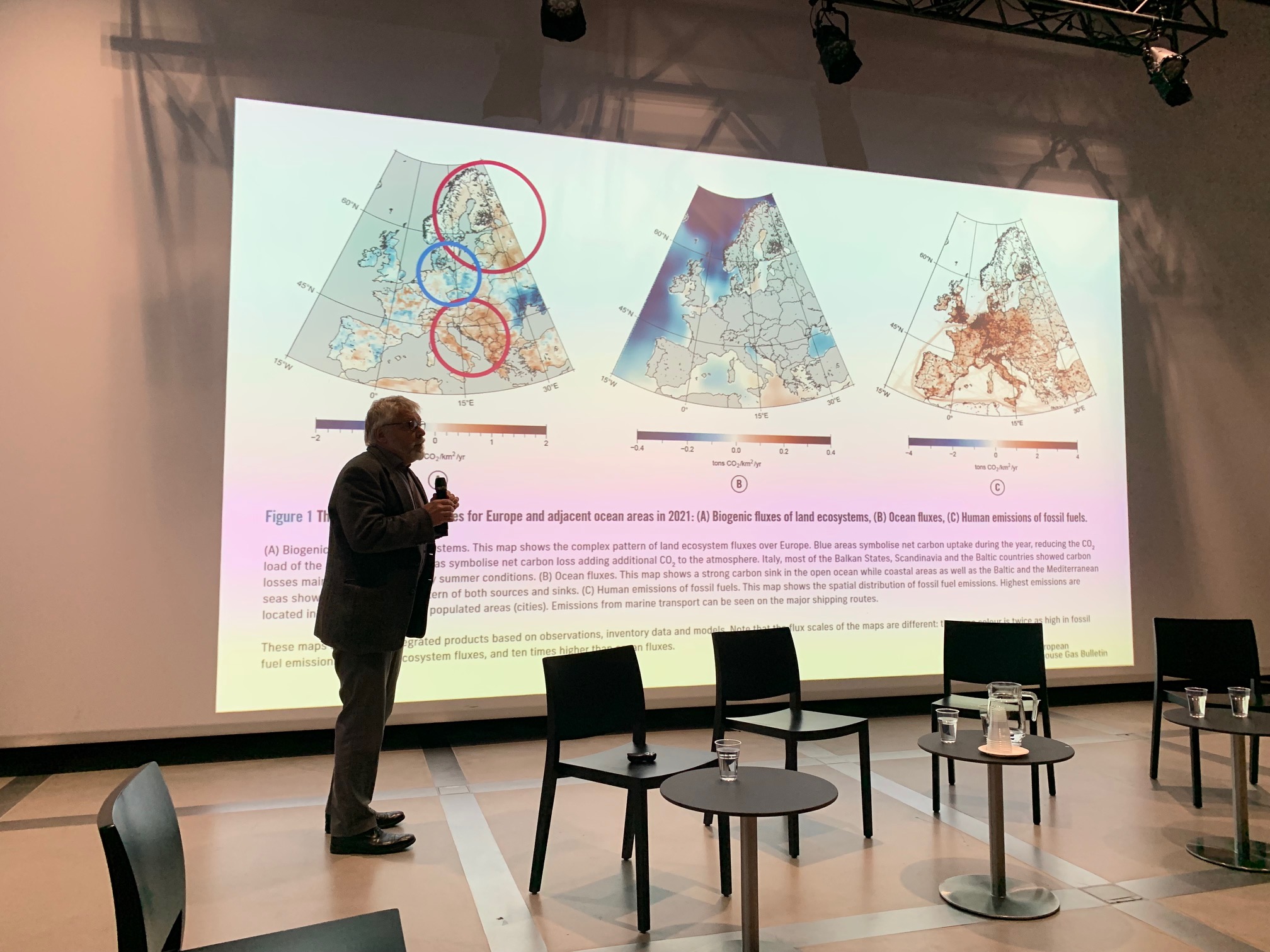
The panelists explained what is carbon farming in general, discussed its benefits, and what could be the reasons for its mixed welcome among the farmers, despite its clear advantages for both the Earth and for the farmers benefitting from better soil and yields.
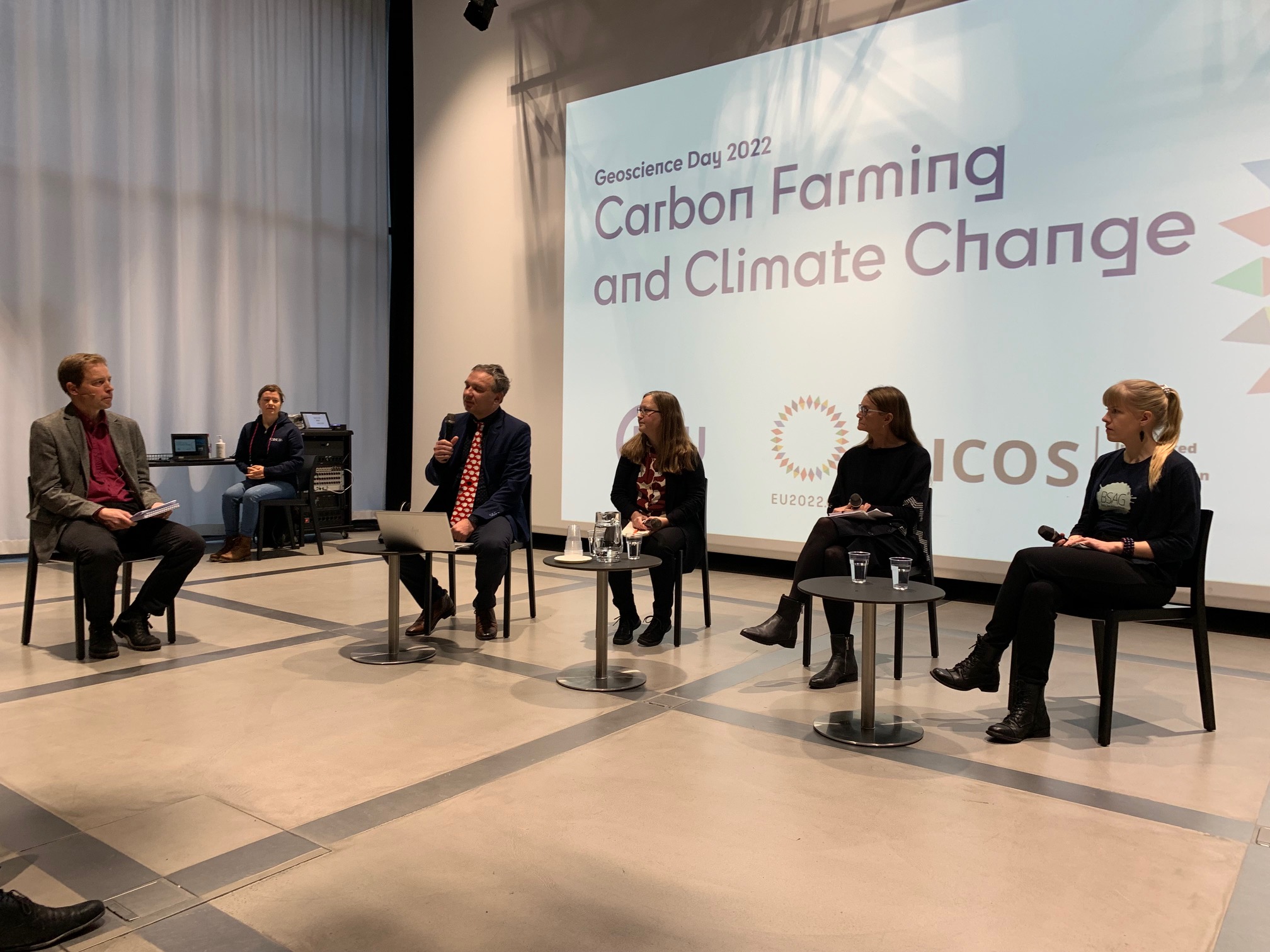
After the panel, Carl Nolander from the Swedish Environmental Protection Agency shared perspectives on Carbon Farming from Sweden. See Nolander's presentation slides here.

Policy-makers need more scientific knowledge about carbon farming
The afternoon included three scientific presentations. The first, presented by Kristiina Lång from Natural Resources Institute Finland, gave insights into the status of the Finnish crop soil: The soil carbon stock in Finnish croplands has been decreasing at least for several decades, due to e.g. previous use of the crops as forests, land management practices and the effects of climate change in boreal areas. She also pointed out that the significance of the cropland carbon sinks increases as the forest sinks decrease, as shown by recent statistics in several European countries. See Lång's presentation slides here.
The second presentation approached the topic from both scientific and practical points of views. Senior scientist Tuomas Mattila from the Finnish Environment Institute, being a part-time farmer himself, talked about agricultural and environmental benefits of carbon farming. He discussed the results of a Carbon Action project which studies agricultural fields in Finland. The study shows that the soils are not in particularly good shape: they lack minerals, they are too hard and too dry due to biological and structural problems, all of which slow down or prevent plants to grow properly, thus reducing the amount of photosynthesizing biomass on the fields. See Mattila's presentation slides here.
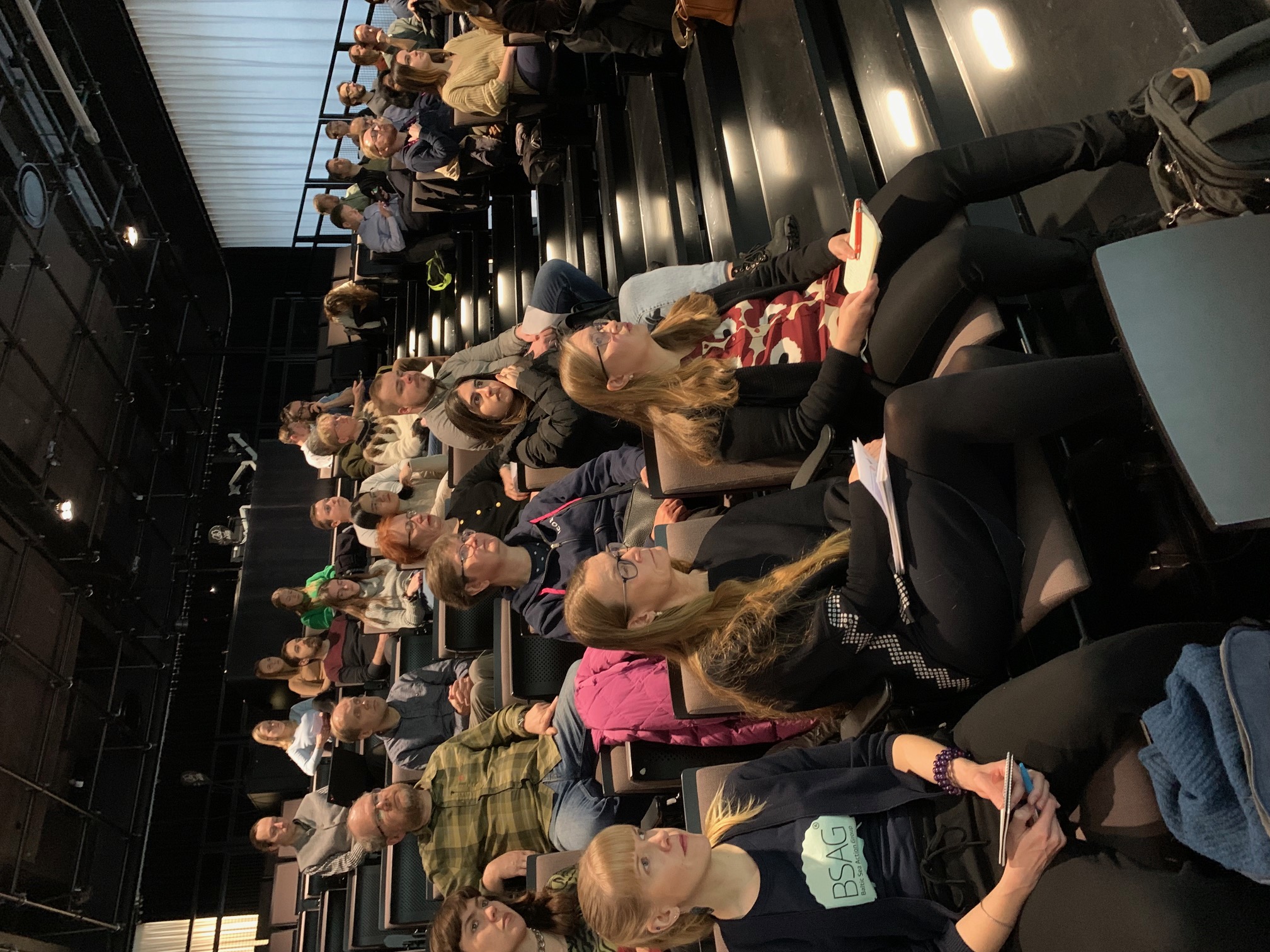
The third and final presentation of the day came from Research Coordinator Layla Höckerstedt from the Finnish Meteorological Institute. She told about studies in which scientists develop ways to measure soil carbon and build models to forecast it for a dozen or so days. “This information could be used e.g. by farmers when they estimate whether fertilising will be more efficient right now or within a week,” Höckerstedt mentioned. See Höckerstedt's presentation slides here.
“Policy-makers appreciate and use scientific knowledge when pondering climate change mitigation and adaptation decisions. This is why we need opportunities for the scientists and the policy-makers to meet and discuss also informally, both on the European level and within geographical areas such as the Nordics or Finland. I hope the Geoscience Day provided such opportunity and also showed the audience that geoscientists are ready to engage, provide their expertise and co-build new knowledge that will contribute to better policies for all” says Emmanuel Salmon, Head of Strategy and International Cooperation at ICOS.